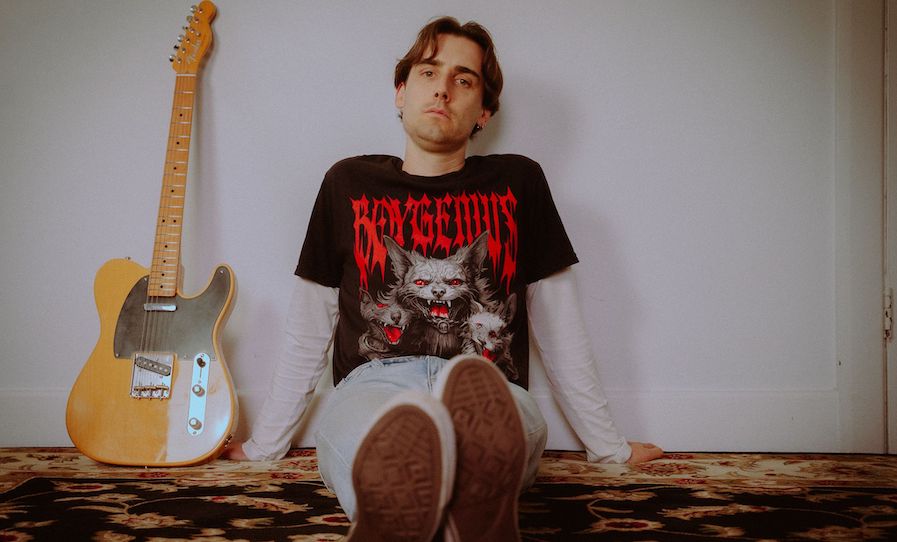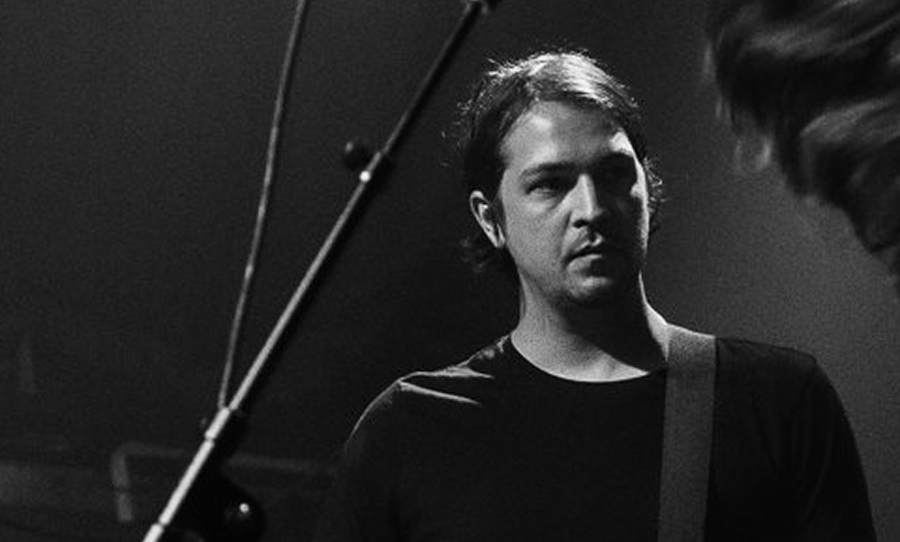Abrasive, ethereal and utterly dreamy, My Bloody Valentine’s Loveless defines the shoegaze genre. Here’s what went into its creation.
1991 has gone down as one of the biggest years in rock music’s recent history. Smashing Pumpkins stampeded onto the alt-rock scene with their debut LP Gish, the Red Hot Chilli Peppers finally achieved commercial success with Blood Sugar Sex Magic, while Pearl Jam’s Ten and Nirvana’s Nevermind catapulted grunge from obscurity into the mainstream. It also marked the release of the most critically-acclaimed shoegaze album of all time – My Bloody Valentine’s Loveless.
Helmed by the band’s vocalist and guitarist Kevin Shields, the tale behind Loveless’ lengthy production has almost overshadowed the music itself. Recorded over two years across nineteen different studios with over a dozen different engineers, Shields’ fierce determination and unbridled perfectionism resulted in a 48-minute tour-de-force that re-defined the sonic capabilities of the electric guitar.

A Protest To High Fidelity
Following the release of MBV’s 1988 debut, Isn’t Anything, Shields immediately began to envision what a follow-up album would sound like. He found himself disillusioned with the current production trends in the late 1980s and wanted to record an album that was at odds with the popular methods of panned guitars, huge stereo drums and crystal-clear vocals.
While heavily influenced by the noise-rock stylings of Sonic Youth and The Jesus and Mary Chain, Shields also took inspiration from the realm of hip-hop. Specifically, he was influenced by The Bomb Squad’s booming samples and mid-range production on Public Enemy’s early albums and wanted to couple this boxy sound with experimental guitar and the sweet melodic stylings typical of 1960s pop music.
So instead of aiming for the hi-fi stereo production that was typical at the time, Shield’s wanted their new album to sound like a real ‘live’ album – to sound as how a band would when performing on stage to an audience. Speaking with Rolling Stone last year, he elaborated on his overall objective for Loveless: “When you go to small concerts, it’s not loads of bass and hi-fi sound. It’s mid-range noise with everything fighting to be heard, and it’s very exciting-sounding and I didn’t hear that in music so that’s why our records became quite mid-rangey.”
Much of the album’s dense tone and lo-fi allure can be attributed to Shields’ decision to record the album primarily in mono. Utilising an Otari MTR90 24-track tape machine for the majority of the recording process, all of the tracks were placed right in the middle of the mix, challenging the listener to carefully analyse each musical element with every repeated listen.x
The iconic imposing guitars of Loveless
To refer to the raging guitars scattered throughout Loveless as a ‘wall of sound’ would be an understatement – these are grating and demented structures so thick and so gargantuan they’d make producers like Phil Spector blush in disbelief. This swirling tone resulted from Shields spending months developing his ‘glide guitar’ sound – a strumming technique he discovered by chance.
Throughout the late 80s, Shields had been experimenting with his Fender Jazzmasters and Jaguars, raising their tremolo arms so that they were locked in a high position, allowing him greater control over pitch bends. This distinct style, combined with an array of alternate guitar tunings, gave the guitars on Loveless a warped, hypnotic feel – one that your brain constantly attempts (and fails) to lock in with.
Opting to shy away from the chorus and flanger pedals used so frequently by their shoegaze contemporaries, Shields ran his Jazzmaster and Jaguar through a Yamaha SPX90 Multi-Effects Processor rack unit, utilising its reverse reverb setting. This effect is at the core of Loveless’ melting guitar sound and is showcased in several of the album’s tracks, opener Only Shallow being a prime example.
As well as employing a Jim Dunlop fuzz pedal and a Digitech Whammy for piercing shrieks, the two most prominent pedals were a Roger Meyers Active Fuzz and Octave Fuzz. Alan Moulder, the engineer who worked with MBV the most during recording sessions, commented on Shields’ most common pedal pairings: “Kevin used the Active Fuzz and Octave Fuzz together because you could drive the Octave Fuzz so that would respond with a weird gating effect. It would decay to a point then shut the notes down in a way that he liked.”
Despite the overarching warbling guitar tone that unifies the album’s eleven tracks, many guitar takes on the album were recorded with a different amp and mic set-up. Working alongside Shields while recording the lead guitars, Moulder elaborated on the eclectic methodology stating: “On one song, there were two amps facing each other, quite close together, with different tremolos on each amp and mics in between, so there was some kind of pulsating sound as if they were pushing and pulling against each other.”
Pulsing Bass
While My Bloody Valentine’s previous LP Isn’t Anything featured input from all four band members, the production, recording and overall sonic vision of Loveless was heavily dominated by Kevin Shields. With many of the drums and rhythm guitar tracks already recorded by early 1990, Shields began to concoct bass parts to accompany his wall of guitars. When it was time to record the parts, Shields was unable to fully express his artistic vision of the bass to the band’s bassist Debbie Googe, and because of this, Shields plays bass throughout the entire album.
All of the basslines on the album were played on a headless Steinberger due to the bass guitar’s consistent and warm low-end that cut through the album’s dense, multi-layered tracks. The Steinberger was run through a vintage Ampeg SVT amp with a Neumann U87 mic positioned approximately three inches away from the amplifier to eliminate any noise spill.
Finally, to give the Steinberger some added crunch, Shields used a Vox Tone Bender on nearly all songs. This vintage distortion pedal provided the chugging basslines with a much-needed weight and allowed the bass guitar to compete with the mammoth walls of guitars on tracks such as When You Sleep and Sometimes.
Chopped Up Drums & Manipulated Feedback
Throughout the drawn-out production for Loveless, drummer Colm Ó Cíosóig was recovering from illness and was absent for large chunks of the album’s recording. To counter this, Shields recorded hundreds of various drum hits, beats and fills performed by Ó Cíosóig, then meticulously cut them up to create the drum tracks for nine of the LP’s eleven tracks.
Only two songs are performed live by Ó Cíosóig: opener Only Shallow and the sweet interlude Touched, though many listeners struggle to differentiate between the live and sampled drum beats. All throughout the album, the drums maintain a consistently, mid-heavy tone reminiscent of the Bomb Squad’s production with Public Enemy and providing many songs on the album with a catchy, dance-oriented feel, most notably the album’s seven-minute closer, Soon.
Lurking just underneath the surface of crunchy guitars, driving bass and cut-up beats are a slew of eclectic feedback samples scattered all throughout the album. The extensive sampling began during the recording of To Here Knows When whereby Shields would record guitar feedback from his Jazzmaster to DAT tape and sample the guitar feedback through an Akai S1000, which could then be triggered from a keyboard to create a melody.
These initial samples for To Here Knows When were used to create the dainty broken chords and the airy lead melody for the track, and as Alan Moulder explains, ended up being an integral part of the song’s overall tone: “In the end Kevin mixed the feedback quite low in the track but it was the right level. It gave the song this bubbling little tone underneath. It is quite subtle but you couldn’t take it out because it was a major part of the track.”
These diverse samples of guitar feedback shine through on a number of tracks, from the slinky synth-like chirp on I Only Said to the deranged string section on Loomer – though perhaps their most important role is how they are used to connect the album’s eleven songs. Many of the songs on Loveless end with a small interlude of distorted and manipulated guitar feedback – these warped yet comforting samples act as lucid bridges that tie together the eleven dream-like compositions.
Breathy Vocals
Always one for defying sonic conventions, Shields recorded the backing vocals for the album without laying down any guide tracks for the lead vocals. Shields and Moulder built a blanketed sound booth to eliminate any reflections and ran a Neumann U87 through a UREI 1176 compressor for some top-end sheen.
When it came time for Shields and rhythm guitarist Bilinda Butcher to record their lead vocals at Britannia Row Studios, the two employed engineer Anjali Dutt behind the console and concocted an unusual recording process. Often choosing to record the vocals in the early hours of the morning for a subdued effect, a curtained vocal booth was made so that no-one could watch Butcher or Shields sing, and Dutt even turned off the control room monitors so that she couldn’t hear them.
The elusive vocals all throughout Loveless are kept relatively low in the mix, and when stacked up against the wailing guitars, lyrics are practically unintelligible. As a result, the vocals became just another musical element in an already-dense mix. In keeping with the treatment of guitars, bass and samples, no reverb was added. Instead, Shields would stack nearly a dozen vocal takes on top of each other and play them simultaneously – the result was a natural chorus effect that provided Butcher and Shields’ vocals with an angelic and delicate quality.
Upon Loveless’ release in November 1991, Kevin Shields feared that the album would be critically panned and that his two years of painstaking production work would go unappreciated. Fast forward to nearly three decades later and the album remains one of the most revered in rock history. It’s a record that’s murky, at times confronting, and often soothing. It defies all preconceived notions of how a four-piece rock band should sound like, and it rewards the listeners’ patience by revealing a new sonic detail with each repeated listen.


